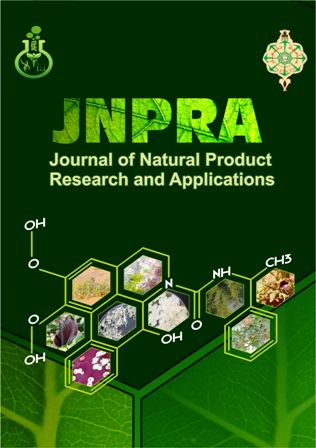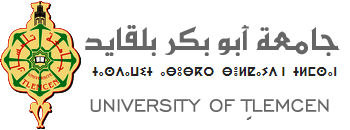Spatial Interpolation of Toxic air Pollutants in Jeddah City, Saudi Arabia
DOI:
https://doi.org/10.46325/jnpra.v1i02.16Keywords:
Spatial interpolation; toxic air pollutants ; Jeddah ; Saudia ArabiaAbstract
This work aimed to study hazardous air pollutants in Jeddah city, between 2010 - 2018. The study of the spatial distribution of (NOX, SO2, PM10) was done by the application of the geostatistical method IDW. Daily observation Data were collected from three field observation stations (Bani Malik, Stadium, Industrial activity), and treated in ArcGIS environment. According to the obtained results, in the year 2010, NOX varies between (25 – 62.99 ppb), with very important concentrations in the south of the study area, surrounding the industrial activities. While in the year 2018, the highest concentrations were between (25 – 30.99 ppb) in the north of the study area. the spatial distribution of SO2 was very important in the south of the study area, compared to the highest concentrations in the north in 2018. The spatial distribution of PM10 was between (153 – 173 µg/m3) in the south of the study area, in 2018 we noticed a decrease of the PM10 concentration, in the industrial area with values between (67 – 77 µg/m3). Even though a lot of work must be done to improve air quality in the city of Jeddah to meet international air quality standards in modern cities.
REFERENCES:
Al-Ahmadi, K., See, L., Heppenstall, A., & Hogg, J. (2009). Calibration of a fuzzy cellular
automata model of urban dynamics in Sfig Saudi Arabia. Ecological Complexity, 6 (2),
80–101.
Al-Hathloul, S., & Mughal, M. (2004). Urban growth management—the Saudi experience.
Habitat International, 28 (4), 609–623.
Aljoufie, M., Zuidgeest, M.H.P., Brussel, M.J.G., & van Maarseveen, M.F.A.M. (2011).
Urban growth and transport understanding the spatial-temporal relationship. In: Pratelli,
A., Brebbia, CA. (Eds.), Urban transport XVII: urban transport and the environment in
the 21st Century. WIT Press, Southampton, pp. 315–328.
Aljoufiea, M., Brussel, M., Zuidgeest, M., & van Maarseveen, M. (2012). Urban growth and
transport infrastructure interaction in Jeddah between 1980 and 2007. International
Journal of Applied Earth Observation and Geoinformation, 21(1), 493–505.
https://doi.org/10.1016/j.jag.2012.07.006
Almazroui, M., Mashat, A., Assiri, M. E., & Butt, M. J. (2017). Application of Landsat Data
for Urban Growth Monitoring in Jeddah. Earth Systems and Environment, 1(2), 1–11.
https://doi.org/10.1007/s41748-017-0028-4.
Briggs, D.J., Collins, S., Elliott, P., Fischer, P., Kingham, S., Lebret, E., Pryl, K., van
Reeuwijk, H., Smallbone, K., & van der Veen, A. (1997). Mapping urban air pollution
using GIS: a regression-based approach. International Journal Geographical
Information Science, 11(7), 699–718.
Briggs, D.J., de Hoogh, C., Guiliver, J., Wills, J., Elliott, P., Kingham, S., & Smallbone, K.
(2000). A regression-based method for mapping traffic-related air pollution: application
and testing in four contrasting urban environments. Science of the Total Environment,
253(1-3), 151–167. https://doi.org/10.1016/S0048-9697(00)00429-0
Dockery, D.W., Spiezer, F.E., & Stram, D.O. (1989). Effects of inhaled particles on
respiratory health of children. American Review of Respiratory Disease, 139(3), 587–
594. EPA (2016). Air Quality Guide for Nitrogen Dioxide.
Filonchyk, M., Yan, H., Yang, S., & Hurynovich, V. (2016). A study of PM 2.5 and PM 10
concentrations in the atmosphere of large cities in Gansu Province, China, in summer
period. Journal of Earth System Science, 125(6), 1175–1187.
https://doi.org/10.1007/s12040-016-0722-x.
Hussein, T., Alghamdi, M. A., Khoder, M., AbdelMaksoud, A. S., Al-Jeelani, H., Goknil, M.
K., Shabbaj, I. I., Almehmadi, F. M., Hyvärinen, A., Lihavainen, H., & Hämeri, K.
(2014). Particulate matter and number concentrations of particles larger than 0.25 μm in
the urban atmosphere of Jeddah, Saudi Arabia. Aerosol and Air Quality Research, 14(5),
1383–1391. https://doi.org/10.4209/aaqr.2014.02.0027.
Khodeir, M., Shamy, M., Alghamdi, M., Zhong, M., Sun, H., Costa, M., Chen, L.C. &
Maciejczyk, P. (2012). Source Apportionment and Elemental Composition of PM2.5 and
PM10 in Jeddah City, Saudi Arabia. Atmospheric Pollution Research, 3(3), 331–340.
Meyer, M.D., & Miller, E.J. (2001). Urban Transportation Planning, 2nd ed. McGraw Hill,
New York.
Philip, G. M., & D. F. Watson. (1982)."A Precise Method for Determining Contoured
Surfaces." Australian Petroleum Exploration Association Journal, 22(1), 205–212.
Pope, C.A., Bates. D.A., & Raizenne, M.E. (1995). Health effects of particulate air pollution:
time for reassessment? Environ Health Perspect, 103(5), 472–480.
Schwartz, J. (1993). Particulate air pollution and chronic respiratory disease. Environmental
Ressources, 62(1),7–13.
Salman, A., Al-Tayib, M., Hag-Elsafi, S., & Al-Duwarij, N. (2016). Assessment of pollution
sources in the southeastern of Riyadh and its impact on the population/Saudi Arabia.
Arabian Journal of Geosciences, 9(4), 1–16. https://doi.org/10.1007/s12517-016-2371-4
Varatharajan, R., Manogaran, G., Priyan, M.K., Balas¸, V.E., & Barna, C. (2018). Visual
analysis of geospatial habitat suitability model based on inverse distance weighting with
paired comparison analysis. Multimeia Tools Application, 77, 17573–17593.
Watson, D. F., & G. M. Philip. (1985)."A Refinement of Inverse Distance Weighted
Interpolation." Geoprocessing, 4(2), 315–327.
WHO – World Health Organization. (2018). Air Pollution. Health and Sustainable
Development. Available in: https://www.who.int/sustainable-development/
transport/health-risks/air-pollution/en/ Acess in 19/12/2018
Downloads
Published
How to Cite
Issue
Section
License
Copyright (c) 2021 Journal of Natural Product Research and Applications

This work is licensed under a Creative Commons Attribution-NonCommercial-NoDerivatives 4.0 International License.






